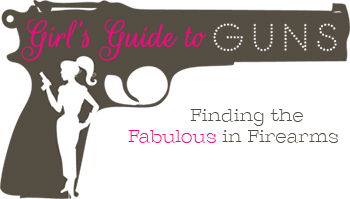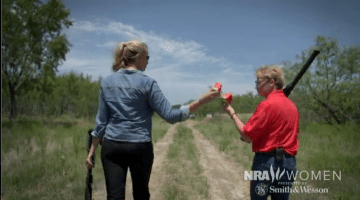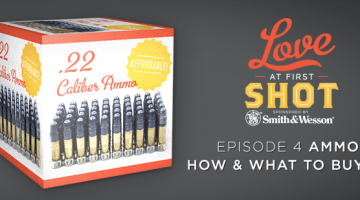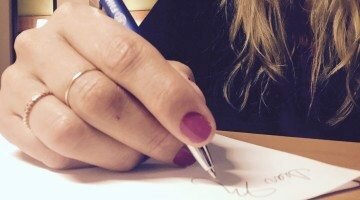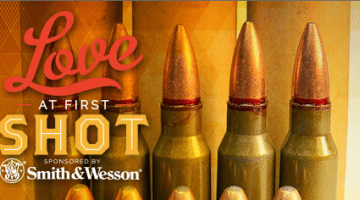…about firearms is…
(drum roll, please)
SAFETY
And while this is not new information to most of my readers, it never hurts to revisit some of the basics. We do it in ballet, might as well do it with bullets. Here we go:
1) Handle all firearms as if they are loaded.
And even after you have determined that it is unloaded, treat it like it’s loaded anyway.
2)Always keep the firearm pointed in a safe direction.
In selecting a safe direction, you must also take into consideration that a bullet can ricochet or glance off any object it strikes, and that bullet can penetrate walls, ceilings, floors and windows.
3)Keep your finger off the trigger until the sight is on a safe target and you have made the decision to fire.
By keeping your finger completely outside the trigger guard until you are aimed at the target, you guarantee that any shots you fire will go safely in the direction of your intended target.
4)Always be certain that your target and the surrounding area are safe before firing.
A bullet can travel up to several miles, so you should be certain of what your bullet could strike before you pull the trigger. never fire at a movement, a noise, a flash of color, or a rustling bush without positively identifying your intended target.
5) The first thing to do when handling a firearm is to safely determine whether it is loaded.
If you don’t know the proper way to open the action of a particular firearm, don’t handle it! Instead, consilt the owner’s manual, your local gun dealer, or a more knowledgeable shooter. DO NOT experiment.
6)Thoroughly read the instruction manual supplied with your firearm.
Never use any firearm unless you completely understand its operation and safety features. If you do not have an instrution manual, contact either the store where you purchased the gun or the manufacturer directly and request one.
7)Make sure your firearm is in good working order and that the barrel is clear of dirt and obstructions.
Any obstruction that prevents the bullet from moving down the barrel can cause pressure to build up in the weapon. A small bit of mud, gun grease, excess lubricating oil, or rust can cause pressure to build to the point where the barrel bulges or bursts upon firing resulting in a damaged gun and serious bodily injury to the shooter or other in close proximity.
8)Only use ammunition recommended by the firearm manufacturer, and always be certain that the ammunition matches the caliber of your gun.
The fact that a cartridge fits into your gun does not mean it is safe to fire!! Use only the correct ammo for your firearm.Attempting to fire even a single improper bullet can destroy your gun and cause serious personal injury or death.
9)Quality Ear and Eye protection should always be worn when shooting or observing.
Exposure to the sound of gunfire without protection can permanently damage your hearing. Shooting glasses, preferably with side panels, can help guard against eye injuries from ejected cases and the splashback of pebbles and fragments from the backstop. Wearing eye protection when disassembling and cleaning our gun will aslo prevent eye injuries from loosened springs or other parts.
10)NEVER use firearms while under the influence of drugs or alcohol.
Handling and using a firearm requires your full attention, alertness, and unimpaired judgment.
11) All firearms should be stored unloaded and secured in a safe storage case, inaccessible to children and and adults who act like children.
Gun locks or gun safes are a must when keeping firearms in the house.
12) Know your state’s laws and abide by them.
Bottom line, it’s your responsibility.
Now go have fun, kids!
Gun Safety rules adapted from the GLOCK.COM safety manual. You can also find them here: https://www.glock.com/english/index_safety.htm
